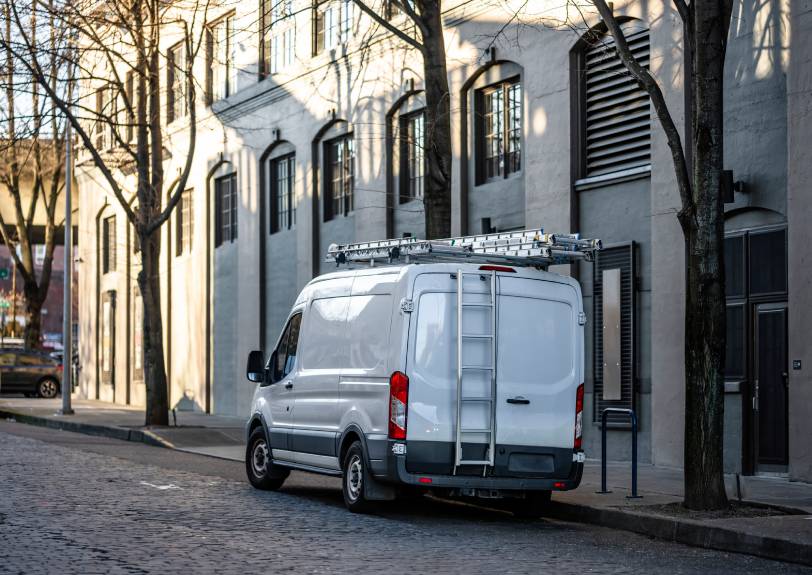
The Ford Transit and Fiat Ducato are popular vans for a reason. However, which one is right for you: the market leader or the recently updated Ducato?
Whilst the Ford continues its domination of the sector, Fiat has recently launched a facelifted Ducato with some significant, industry-leading improvements.
In this feature, Tim Cattlin puts the vans head-to-head to see just how much of a challenge the Ducato could be to the Transit’s dominance.
Body and Weights
Let’s face it: this is probably the most important factor when looking to buy or lease a van. Is there a van in the range that will carry what you need? Both the Transit and the Ducato have plenty of options that should have you covered.
With the Transit, you have a choice of three lengths, designated L2, L3 and L4. Roof heights are H2 or H3, and when it comes to weights the Ford is offered at 2900kgs GVM (Gross Vehicle Mass), 3100kgs, 3300kgs and 3500kgs.
There are heavier versions but we’re going to leave these out as they are subject to additional licensing and operating legislation which most van operators will prefer to avoid.
Load lengths? The L2 will accommodate just over three metres, and you’ll fit a 4.2 metre length into the L4 which has a load volume of 15.1 cubic metres. Payloads vary considerably depending on the exact model, ranging from 895kg to 1472kg.
The Ducato has four load lengths on offer, with wheelbases (rather than L2 /L3 / L4 etc) from 3000mm to 4035mm. There are three roof heights to choose from, and you can order a Ducato at 2800kgs GVM, 3000kgs, 3300kgs and 3500kgs.
Load length in the shortest Ducato is 2.67 metres (the 3450mm wheelbase version probably more comparable to the L2 Ford with 3120mm of length), but if you opt for the longest – the 4035mm wheelbase Ducato - you’ll have 4.07 metres to play with, and 17cu/m of volume with the high roof option.
Engines and Drivetrains
The Transit has plenty of choice, with a 2.0-litre ‘EcoBlue’ diesel engine at outputs of 105PS, 130PS, 170PS and 185PS.
You can specify front, rear, or all-wheel drive, and there’s a 10-speed automatic transmission option for those who opt for rear-wheel drive.
There are green Transits too. mHEV (mild hybrid) tech stores power from the vehicle when slowing down, releasing the energy when required, saving fuel.
A fully electric ‘e-Transit’ is making its debut this year, and we’ve briefly covered this in our electric van guide. We’ll have more detail on this including driving impressions in the near future.
The Ducato has a slightly bigger, 2.2-litre engine, again offered in a number of power outputs, (120HP, 140HP 160HP and 180HP).
Previously, Fiat used a different engine to their Stellantis stablemates who market the very similar Vauxhall Movano, Citroen Relay and Peugeot Boxer vans, but they have now fallen in line with their siblings offering the same diesel unit.
Want an electric Ducato? It’s now available in the form of the Fiat E-Ducato and you can read more about it in our head-to-head comparison with Vauxhall Movano-e.
Trim and Specification Levels

Ford Transit
Transit is offered in three mainstream trim levels: Leader, Trend and Limited.
Leader has a 4.2-inch multimedia screen, Bluetooth connectivity, power windows and a number of safety features including side wind mitigation, curvature control and emergency brake warning.
Move up to Trend and you’ll get a heated windscreen, cruise control, parking sensors, power mirrors and automatic wipers and lights. The touch screen is upgraded to 8”.
Limited spec gains air conditioning, alloy wheels and side park assist.
There’s also the slightly niche Transit Trail. It’s broadly based on the Trend but gains 16” black alloy wheels, air conditioning, a full leather interior and all-wheel drive.
It’s perfect if you want an off-road van.
Fiat Ducato
The Ducato also manifests itself in three trim levels: Standard, Tecnico and Business Edition.
For Standard, you’ll get a DAB radio with Bluetooth connectivity but not a great deal more.
If you want a bit more spec, you’ll need to move up to the Tecnico where you’ll see a nice 7” touchscreen which includes the all-important Apple CarPlay / Android Auto smartphone integration. There’s also air conditioning, wireless phone charging and a reverse camera.
The range topping Business Edition ups the size of the touchscreen to 10” and you’ll see a 7” digital instrument cluster.
There’s some impressive new tech hidden away under the skin in this new Ducato. Fiat claims that the van is ‘Level 2 Autonomous’ when it is specified with automatic transmission.
It has four ADAS (Advanced Driver Assistance Systems) modules – adaptive cruise control with ‘Stop and Go’, autonomous emergency braking, traffic jam assist and lane keeping assist.
Also available are active park assist, crosswind assist, intelligent speed assist, attention assist and autonomous post collision braking.
Connectivity
Most van manufacturers are now offering some sort of connectivity, allowing for remote monitoring and even operation of some features.
FordPass Pro is a system that uses an inbuilt modem to communicate. A smartphone app can receive vehicle health alerts, allow you to remotely lock and unlock the van, start the engine and warm the cab. Guard mode warns you of any activity with the vehicle, allowing early warning of attempted theft.
Fiat’s ‘Uconnect’ works in a similar way and offers some features not too dissimilar to those found in the Ford product.
Driving Impressions
Ford Transit
The Transit engine is quiet, oozes torque at lower revs and returned just over 30mpg in the week we had it, with the majority of driving being high speed motorway use.
The electric power steering is an absolute pleasure around town, providing a well-balanced feel and light operation.
Albeit tested unladen, the van handled and rode perfectly and, on one drive of over 200 miles, the driver arrived at his destination as fresh as if he had travelled in a decent passenger car.
The Transit boasts excellent build quality inside and out and has an air of refinement which is difficult to define
Fiat Ducato
As you’d expect, the 160HP engine provides more than enough power, especially in an unladen van as tested.
The nine-speed automatic transmission is a delight, so much so that you don’t notice it in operation, changing up and down through the ratios almost seamlessly.
Engine noise is a little intrusive, sounding a bit agricultural when we’re now becoming accustomed to some very quiet Euro 6 units in competitor vans.
The semi-autonomous tech makes itself apparent at times during everyday driving. Drift a little too close to the centre line on a gentle curve and the electric power steering will not only turn the steering wheel in a corrective action, but it’ll also maintain the distance from the line throughout the corner, straightening only as the road does the same.
The ride is a little firm but, given that the van was tested with no load, we’d suspect that this would be less noticeable with a tonne or so in the rear.
So, which is best?
Each van has its strengths and, although the Transit no doubt has earned its reputation, Fiat has come a long way with the new Ducato.
If you want a safe choice, then choose the Transit. If you value tech, then opt for the Ducato. All in all, however, the performance between both vans is close.
Remember to check your van insurance before picking your next motor.
I started my career selling vans in the mid-eighties, progressing through dealer groups to management level. In 2010 I joined vehicle valuation company CAP, being made responsible for forecasting future used values for all makes and models of vans and trucks, this data being used by leasing companies and manufacturers to assess future risk. This role entailed very early exposure to new models including extensive testing across Europe.
In 2016 I started up my own consultancy business dedicated to the LCV industry. In addition, my freelance written work has been used by a number of clients and I am a regular contributor to WhatVan? magazine. I’m also a judge for their annual ‘Van of the Year’ awards.
To relax, I enjoy travel and walking near my Yorkshire home.

